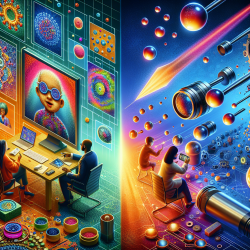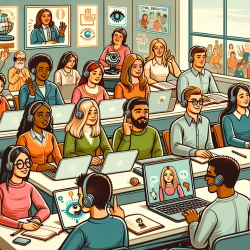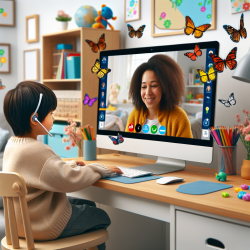Introduction
As a speech-language pathologist committed to improving outcomes for children, staying informed about technological advancements is crucial. One such advancement is the innovative method of microlens fabrication through electro-hydrodynamic (EHD) printing and replica molding. Although this might seem distant from speech therapy, understanding and utilizing technological advancements can enhance the delivery of online therapy services, such as those provided by TinyEYE.
Understanding Microlens Fabrication
The research article titled "Microlens Fabrication by Replica Molding of Electro-Hydrodynamic Printing Liquid Mold" presents a novel approach to creating microlenses. This method combines EHD printing with soft lithography to produce microlens arrays efficiently and cost-effectively. The process involves spraying glycerol solution microdroplets onto ITO glass to form a liquid mold, which is then used to create a polydimethylsiloxane (PDMS) mold. This mold can fabricate micro-optical devices on various substrates.
Implications for Online Therapy
While microlens fabrication might seem unrelated to speech therapy, the underlying principles of innovation and efficiency can be applied to enhance online therapy services. Here are some potential implications:
- Improved Visual Aids: High-quality microlenses can enhance visual aids used in online therapy, making them more engaging and effective for children.
- Enhanced Communication Tools: The precision and clarity provided by advanced optical devices can improve the quality of video and audio communication in online sessions.
- Cost-Effective Solutions: The cost-effectiveness of this fabrication method aligns with the need for affordable therapy solutions, ensuring broader access to services.
Encouraging Further Research
For practitioners interested in improving their skills and services, exploring further research in this area is beneficial. Understanding the technical aspects of microlens fabrication can inspire innovative applications in therapy settings. Consider the following steps:
- Stay Informed: Regularly review scientific literature to stay updated on technological advancements.
- Collaborate with Technologists: Engage with professionals in technology fields to explore potential collaborations.
- Experiment with New Tools: Incorporate advanced optical tools into therapy sessions to assess their impact on outcomes.
Conclusion
The integration of innovative technologies, such as those described in the microlens fabrication research, can significantly enhance the delivery of online therapy services. By embracing these advancements, speech-language pathologists can improve therapy outcomes and provide more engaging and effective sessions for children.
To read the original research paper, please follow this link: Microlens Fabrication by Replica Molding of Electro-Hydrodynamic Printing Liquid Mold.










